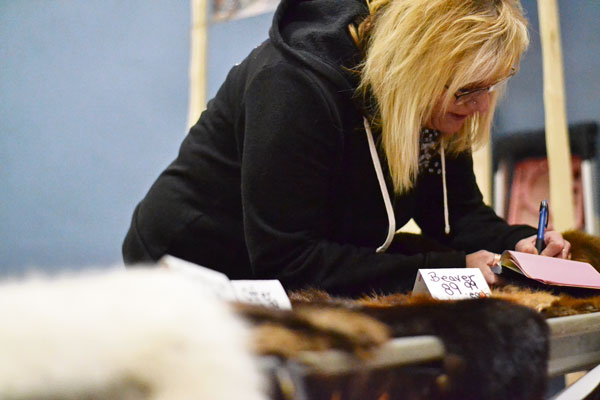
Northern Saskatchewan Trapping Association’s Fur Table a success despite hits to industry
Rose Roberts says the Northern Saskatchewan Trapping Association (NSTA) is focused on maintaining connection to land.
The secretary and treasurer helped organize the fifth annual Fur Table on Saturday, which saw a successful turnout in the wake of a big hit to the industry—A few months ago, the Toronto-based North American Fur Auctions (NAFA) said it likely won’t be selling wild furs this season because of financial troubles.
About a week ago, the North West Company, which owns Northern stores across Canada, also announced it would stop purchasing furs. It later reversed the decision.
“What we’ve been hearing from trappers is when they heard about NAFA going under and then Northern’s decision, a lot of them didn’t even go out on the land because they figured ‘What’s the point? We’re not going to be able to sell our furs anymore,’” said Roberts.
“We don’t do this for the money, which is what the provincial government thinks: It’s an economic base. It’s not an economic base—it’s part of our identity; it’s part of our culture; it’s part of maintaining our connection to the land.”
Roberts said the NSTA is now working on selling furs in small markets, especially those that will use wild furs for apparel or fur trim.
“The fur industry has gone down again, so the only major market is China and now they’re starting to have their own mink farms and have their own furs,” she said.
“We were thinking it was pretty much in a crisis situation.”
The success of this weekend’s Fur Table at Parkland Hall came as a surprise, she said. The NSTA invited several buyers to the event so trappers can get the best prices for their furs.
“This industry has been defined by the fashion industry,” she explained. “You might get ten dollars for a beaver pelt, but if you make a pair of beaver mitts, you can sell them for $300.”
Roberts said the furs of coyote and marten, which is also known as sable, are the most in demand.
She mentioned the current hype surrounding Canada Goose, which is selling the popular coyote fur-trimmed parkas for hundreds and hundreds of dollars.
One of the vendors at the Fur Trade was K&J Northern Furstretchers from Nipawin.
Kerry Barks agreed the event was successful despite the industry’s decline. In fact, he said the business is growing every year.
“I was really happy to see this many people coming through the hall here today, a lot more than we seen last year. Good turnout. I’ve seen a lot of people out of the north,” said Barks.
He runs K&J Northern Furstretchers with his wife Janet. They sell trap and snare supplies, wooden stretchers, tools, scents, oils and tanned furs, to name a few.
“I’ve been trapping ever since I was a little kid,” said Barks. He explained he learned from an Indigenous man in northern Saskatchewan, but progressed on his own.
He eventually purchased a trapline, which he continues to run in the north. Janet also ventured into the business.
“We’d like to teach the younger generation about trapping—it’s something that’s going to be a lost art if we don’t do it,” he said. “The fur market has plummeted.”
“If you’re a trapper, you’re in for the good and you’re in for the bad.”

